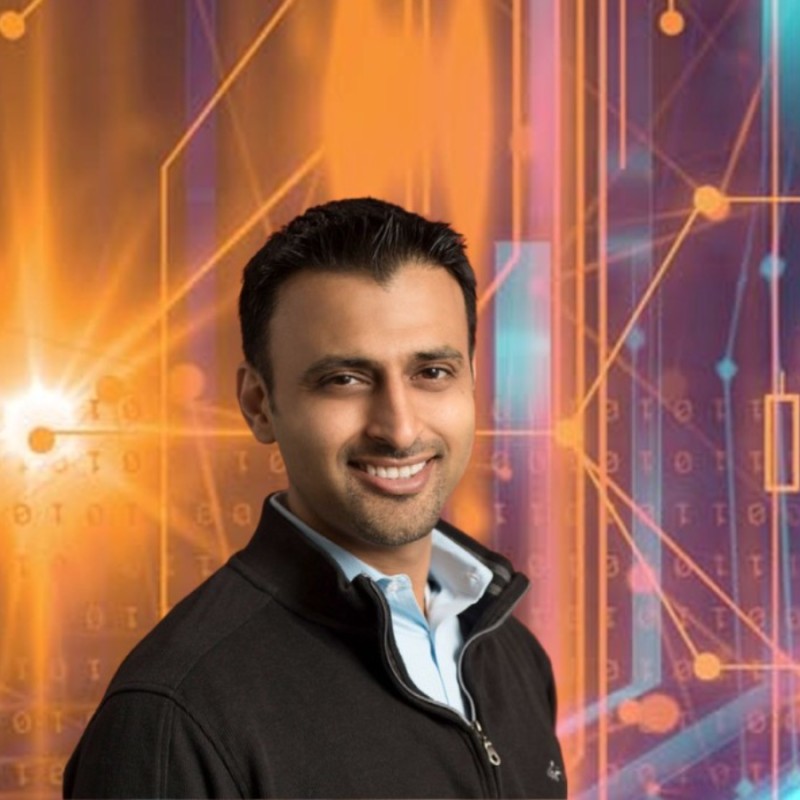
Key Points
As enterprises adopt AI, many are shifting their focus from pure technology to a structured approach that addresses governance, culture, and strategy.
Chet Gandhi, a Chief Technology Officer at DynPro Inc., explained why successful AI adoption requires a phased approach that prioritizes business needs and external collaboration.
The 'Activate AI' methodology he outlined uses executive alignment, employee training, and business integration to help organizations augment their workforce and deliver measurable value.
Boardroom mandates on AI are forcing enterprises to rethink their strategy, with a clear directive for CIOs to adopt AI for efficiency, cost savings, and new revenue. The path forward, however, is proving to be less about technology and more about governance and culture, and executive alignment. Out of this pressure, a new kind of leader is emerging, one who turns the challenge into a structured growth opportunity.
We spoke with one such leader, Chet Gandhi, Chief Technology Officer at DynPro Inc. His perspective as a transformational CIO and founder of CIOptimize is grounded in structured thinking and his work in the trenches of AI adoption.
"There’s no silver bullet with AI adoption," Gandhi said. "The train is moving, and CIOs have to crawl, walk, and run to be successful. Just start somewhere and adapt as your organization learns what works." The new directive to drive growth while maintaining governance adds a third priority for CIOs, creating a trifecta of pressures that is reshaping the role, he explained.
The CIO's trifecta: Securing the enterprise and ensuring operational stability are now table stakes, but AI is the wild card, Gandhi said. Because it constantly evolves, it forces CIOs to rethink adoption, guard against rogue outcomes, and align every initiative with business goals. What was once a purely technical role has become a complex balancing act of governance, strategy, and risk management.

While the pressure can cause paralysis, the only way forward is to act. Breaking down the goal of "figuring out AI" into a manageable process that favors progress over perfection is key, Gandhi explained.
Business before bits: "It starts with the business, not the tech," he said. "CIOs need to bridge directly with functional leaders to find quick wins and show clear productivity gains." Real adoption happens when the conversation shifts from solving general business problems to asking how AI can make teams more productive on specific goals, Gandhi said.
At DynPro, Gandhi formalized this journey into a methodology called 'Activate AI', which unfolds in three structured stages to create order from the chaos of AI adoption. First is executive alignment, where leaders define the strategy and prepare to guide adoption across the organization. Next comes employee training, which helps teams use AI responsibly and efficiently. Embedding AI into core processes to multiply productivity and deliver revenue impact is the final stage, line-of-business integration. To find that value, leaders must look outward, Ghandi said.
The 60% rule: Most CIOs are starting to realize that innovation is impossible in a bubble. "External collaboration has become 60% of the job," Gandhi said. To stay informed about the market, he stays plugged into a broad ecosystem of CIO networks, vendors, and customers. "We learn from their use cases, and they learn from ours," he explained. "If you stay connected to your ecosystem, you hear what’s working and stay ahead of the curve."
The price of privacy: Meanwhile, a more collaborative approach challenges the old "keep our secrets" mindset. "A few years ago, CIOs believed their strength was in guarding knowledge. That approach left organizations with massive tech debt and bespoke systems that now stifle innovation," Ghandi said.
Today, that mindset has flipped. Now, collaboration is a strength, fueling faster innovation and smarter decision-making as part of the new operating model. Here, Ghandi drew the direct connection to AI adoption—a journey that often begins with fear but matures into collaboration.
From survival to symbiosis: Initial pressure from boards or competitors can create anxiety for leaders considering AI. But introduce collaboration, and it transforms into symbiosis, Gandhi explained. "At first it’s 'survival mode,' but soon it becomes, 'Let’s all thrive together.'"
With collaboration, a reactive, fear-driven effort can mature into a proactive culture, Ghandi concluded. Despite the technology’s power, people remain at the center of the equation, he said. In his vision for the future, success is about empowering people, sharing knowledge, and working together to turn possibilities into progress. "AI will handle the heavy lifting, but human connection is what keeps innovation alive."
.svg)



.webp)

